Gomphidius Fr.
The European members of this genus are recognized by their overall appearance, hymenophore of gills, viscid cap surface and the presence of glutinous veil.
Gomphidius roseus (Fr. : Fr.) P. Karst.
Description
Fruitbodies with glutinous veil, its remnants seen as glutinous ring in the upper part of the stipe. Cap up to 5 cm, depressed, often umbonate, rarely flat, flat-convex or convex, reddish pink or bright red, viscid. Stipe mostly cylindrical or sometimes spindle-shaped and usually tapering towards the base, whitish, sometimes yellowish at the base, with weakly defined glutinous ring in the upper part. Flesh white or whitish, unchanging when exposed to air. Gills whitish at first, gradually becoming grey to dark grey with age, unchanging when bruised. Smell not distinctive. Taste not distinctive. Spores 17–20 × 5–5.5 μm.
Habitat. In coniferous and mixed forests, mycorrhizal with pines (Pinus), always associated with Suillus bovinus (Olsson & al. 2000).
Distribution. Throughout Europe.
Photographs
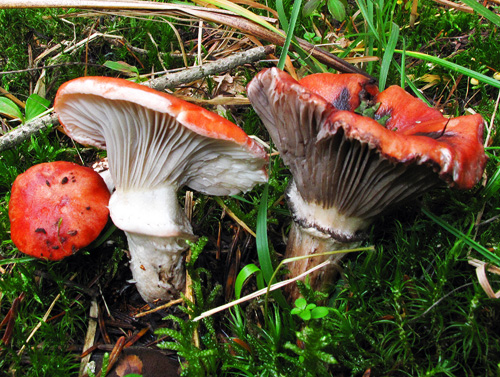
Fruitbodies of Gomphidius roseus. The striking colour places this gilled bolete among the easiest to identify. Note the colour of the gills changing with age from whitish to dark grey. (photo G. Konstantinidis)

Fruitbodies of Gomphidius roseus. Note the ring. (photo G. Konstantinidis)
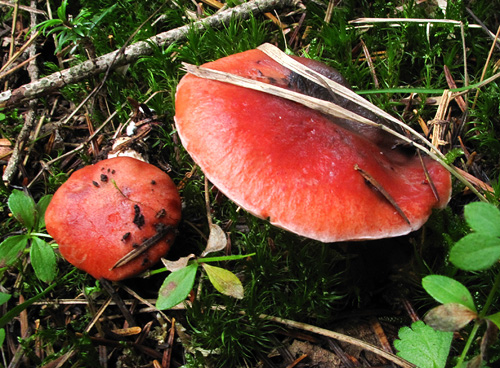
Fruitbodies of Gomphidius roseus. (photo G. Konstantinidis)
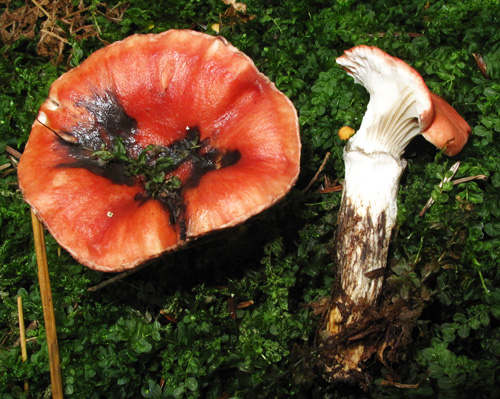
Fruitbodies of Gomphidius roseus. The cap may be spotted sometimes. (photo G. Konstantinidis)
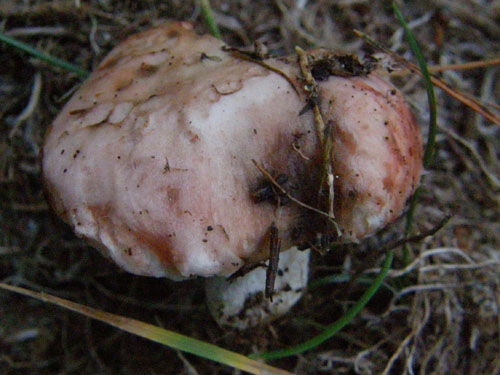
Old and weathered specimens Gomphidius roseus loose their bright colours, see also the photograph below. (photo B. Assyov)
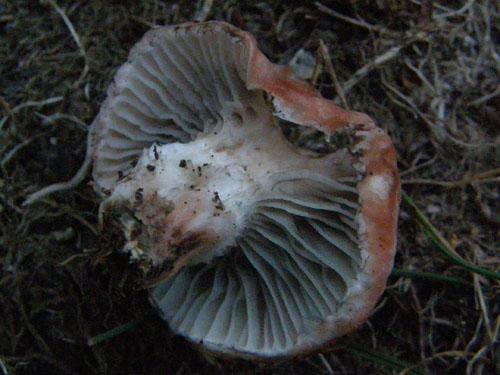
Wheathered fruitbody of Gomphidius roseus - lower side. (photo B. Assyov)
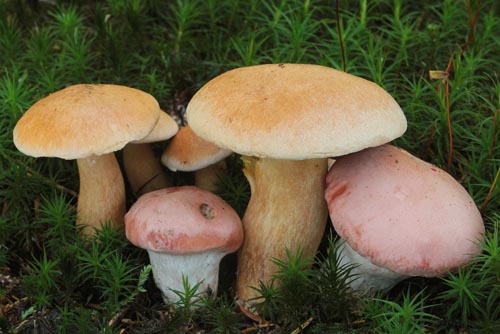
Fruitbodies of Gomphidius roseus and Suillus bovinus. The two species normally occur together. (photo M. Mikšík)

Spores of Gomphidius roseus. Scale bar = 10 μm. (photo G. Konstantinidis)
Some other microphotographs of this beautiful Gomphidius may be seen on the link below.
Gomphidius roseus on Enzo Musumeci’s Sentieri boscivi
Important literature
Breitenbach J. & Kränzlin F. 1991. Pilze der Schweiz. Bd. 3(1). Röhrlinge und Blätterpilze. Verlag Mykologia, Luzern.
Bresinsky, A. 1965. Exsikkatenschlüssel für die Gattung Gomphidius in Mitteleuropa (Agaricales). – Mitteilungen der Botanischen Staatssammlung München 5: 125–134. (available online)
Knudsen, H. & Vesterholt, J. [eds.]. 2008. Funga Nordica. Nordsvamp, Kopenhagen.
Pilát, A. & Dermek, A. 1974. Hríbovité huby. Československé hríbovité a sliziakovité huby (Boletaceae – Gomphidiaceae). Veda, Bratislava.
Olsson, P.A., Münzenberger, B., Mahmooda, S. & Erland, S. 2000. Molecular and anatomical evidence for a three-way association between Pinus sylvestris and the ectomycorrhizal fungi Suillus bovinus and Gomphidius roseus. – Mycological Research 104: 1372–1378.
Watling, R. & Hills, A.E. 2005. Boletes and their allies (revised and enlarged edition). – In: Henderson, D.M., Orton, P.D. & Watling, R. [eds]. British Fungus Flora. Agarics and boleti. Vol. 1. Royal Botanic Garden, Edinburgh.